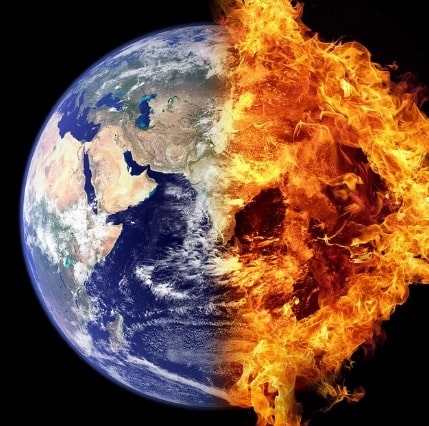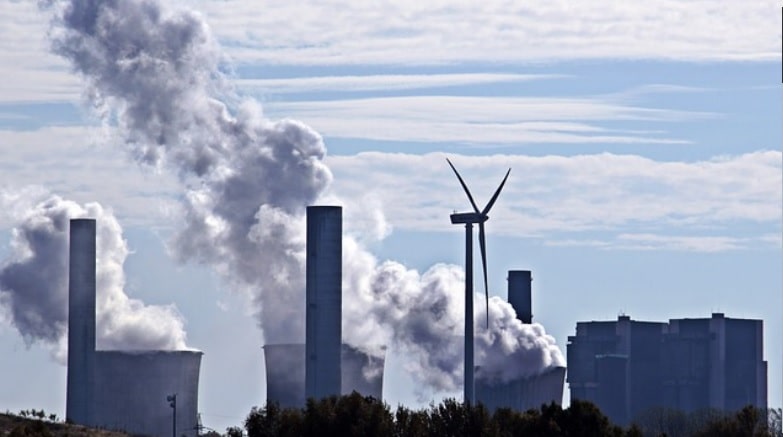10 Effects of Environmental Pollution
What are the 10 Effects of Environmental Pollution? All living creatures, including humans, are threatened by reckless people and countries. So, environmental pollution has become one of the biggest global problems in recent decades. Population growth and the use of greenhouse gases are the main reasons for this problem. However, the decimation of woodlands and the destruction of vegetation caused by distorted urbanization are also among the most important factors. Many studies have been launched both regionally and globally to address environmental pollution. At the beginning of these studies, the sustainable development strategy is included. Within the scope of this strategy, afforestation is carried out in many places, and restrictions are imposed on the use of chemical drugs. In this way, it is aimed to preserve vegetation and biodiversity.
How is Environmental Pollution Calculated?
Environmental pollution is accounted for in various ways, depending on the type of pollution and the context in which it occurs. Here are some examples:
- Legal Regulations: Many countries have laws and regulations that limit the amount of pollution that industries and other entities can release into the environment. These regulations often set limits on air and water pollution and the disposal of hazardous materials.
- Environmental Impact Assessments (EIAs): Before major projects like construction or industrial activities can commence, an EIA is often conducted to assess the project’s potential environmental impact. This includes the potential for pollution and how it can be mitigated or prevented.
- Monitoring and Reporting: Many organizations monitor environmental pollution levels and report on them regularly. This can include measuring air and water quality, tracking the emission of pollutants, and monitoring waste disposal practices.
- Environmental Sustainability Standards: Some organizations follow sustainability standards, such as those set by the International Organization for Standardization (ISO). These standards include requirements for reducing pollution, managing waste, and minimizing the environmental impact of operations.
- Carbon Credits: Carbon credits are a market-based approach to reducing greenhouse gas emissions. Organizations can purchase carbon credits to offset their own emissions, and the funds generated can be used to support environmental initiatives and projects that reduce pollution.
Overall, accounting for environmental pollution involves a range of strategies and approaches, including legal regulations, impact assessments, monitoring and reporting, sustainability standards, and market-based solutions.
Environmental Pollution and Global Warming
Humans are not the only creatures that suffer from environmental pollution. Flora and fauna face the same problem as well. Global warming is one of the biggest environmental problems today. With the increase in carbon emissions, average temperatures have increased worldwide, leading to glaciers melting. The melting of glaciers has caused the extinction of hundreds of animals.
Along with global warming, the risk of flooding the earth has also arisen. Changing the direction of air currents has a big effect on global warming. Therefore, the climate has changed in many places, and the diversity of living things has decreased in many regions which affects humankind in terms of quality of life. The decimation of many animals, especially polar bears, is the most devastating consequence of global warming and climate change.
Examples of Environmental Pollution and Problems

1- Air pollution
One of the biggest environmental problems in the world is air pollution. And breathing
in polluted air can be detrimental for us in the long term. But what causes the problem? There are many factories, and sufficient filters are not used enough to prevent air pollution. Besides that, the use of fossil fuels and smoke from the exhausts of cars also leads to a decrease in the oxygen content in the air. Air pollution is so hazardous that dioxins in the air can harm the liver, immune and neural systems.
2- Reduction of forested areas
Both distorted urbanization and changing climates have led to a decrease in woodlands and an increase in environmental problems characterized as “desertification”. The occurrence of drought in many countries, especially Yemen and Afghanistan, is also related to the reduction of woodlands. All the countries where the same issue happens need to take action before it goes worse day by day. Or else, biodiversity, sustainable livelihoods, climate mitigation, and adaptation will be under threat. As a citizen, what you can do is to join tree planting activities or donate trees with the help of famous reforestation charities.
3- Soil pollution (contamination)
Soil pollution is one of the biggest environmental problems on a global basis just like air pollution. The chief reason is the objects that have not been lost in nature for hundreds of years, such as batteries and nylon bags. Heavy metals used in the industry also lead to soil pollution. Not only do they harm nature, but these kinds of garbage also cause visual pollution. And nobody likes to eat fruits or vegetables grown up in dirty soils. So you can collect batteries or nylon bags whenever you see them on the ground and also you need to inform your group of friends. It will be the best beginning point for you.
With the population approaching 8 billion, environmental and water pollution has increased. Natural disasters, more vehicles in traffic, and natural disasters such as fire and floods are also causes of environmental pollution. As a result, all three environmental problems remarkably affect all living creatures.
Is the Environmental Pollution Solvable?
Most of us are unaware that we share the same planet, which is unique. We are in the haste of daily routines or hanging out with friends and families. Nearly everybody knows we need to take action immediately to preserve our planet for our future, specifically the next generation of humankind. However, the outcome is perplexing. The required responsibility is not taken, though the whole of humankind voices the problem.
The reason why necessary steps are not taken is all about habits. So the key to saving our planet is to change our habits. For instance, if you are working, you may start to go to your job on a bus even if you have a car. Walking or riding a bicycle option will serve our planet in a better way. Not only will you stay healthy, but you will also reduce carbon emissions without spending any effort. Another eco-friendly habit is using a towel to dry hair instead of a hairdryer. According to World Wide Fund for Nature (WWFN), a hairdryer is one of the most electricity-consuming devices.
Using a towel will give you both vivid hair and reduce electric use, which is beneficial for the next generation of us. Unless the problem is solved, the world will likely become a unviable place for us. So, everyone ought to take responsibility and do their best. Besides, governments must implement strict laws to reduce environmental pollution for the next generation. Even if the pollutants varies country to country due to the geographical location, there are always ways to cope with environmental problems.
FAQs
Q1. What are the main types of environmental pollution?
A1. The main types of environmental pollution are air, water, soil, and noise.
Q2. What are the health effects of environmental pollution?
A2. It can cause various health problems such as respiratory diseases, cancer, and neurological disorders.
Q3. How can we reduce environmental pollution?
A3. We can reduce environmental pollution by using renewable energy, proper waste management, implementing environmental regulations, practicing sustainable agriculture, and promoting awareness and education.
Q4. How does environmental pollution affect wildlife?
A4. Environmental impact can lead to the destruction of natural habitats and the extinction of various species.
Q5. What are the economic impacts of environmental pollution?
A5. It can lead to economic losses due to the destruction of natural resources and the cost of healthcare for impact-related illnesses.
Q6. What are some examples of sustainable agriculture practices?
A6. Examples of sustainable agriculture practices include crop rotation, organic farming, and natural pest control methods.
Conclusion
Environmental pollution is a significant global problem threatening the health and well-being of humans, animals, and the environment. The causes of environmental pollution include human activities such as industrialization, transportation, agriculture, and improper waste disposal.
The effects of pollutants include health problems, environmental degradation, and climate change. Solutions to environmental pollution include using renewable energy, proper waste management, implementing environmental regulations, practicing sustainable agriculture, and promoting awareness and education. It is essential to take collective action to reduce pollutants and protect the environment for future generations.
Further Reading
